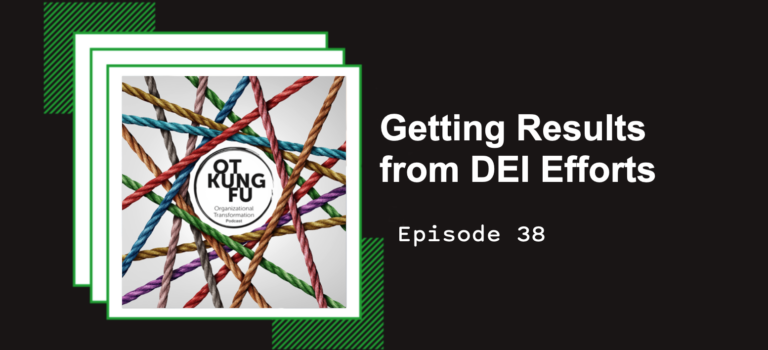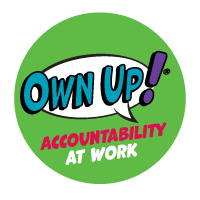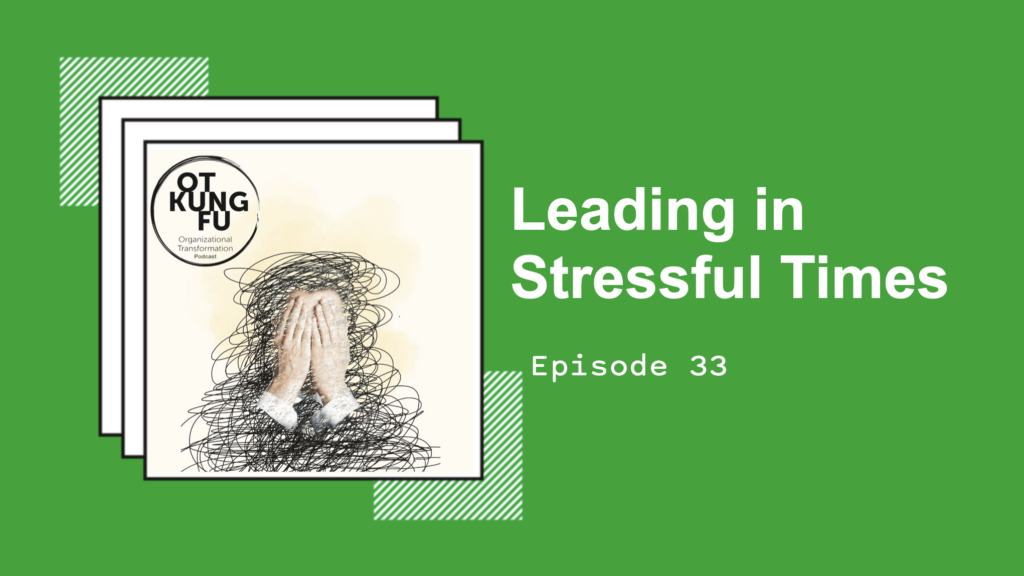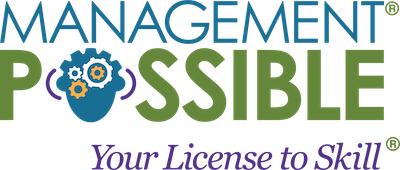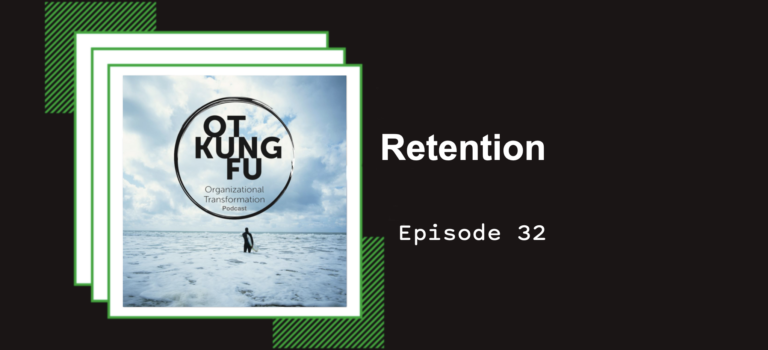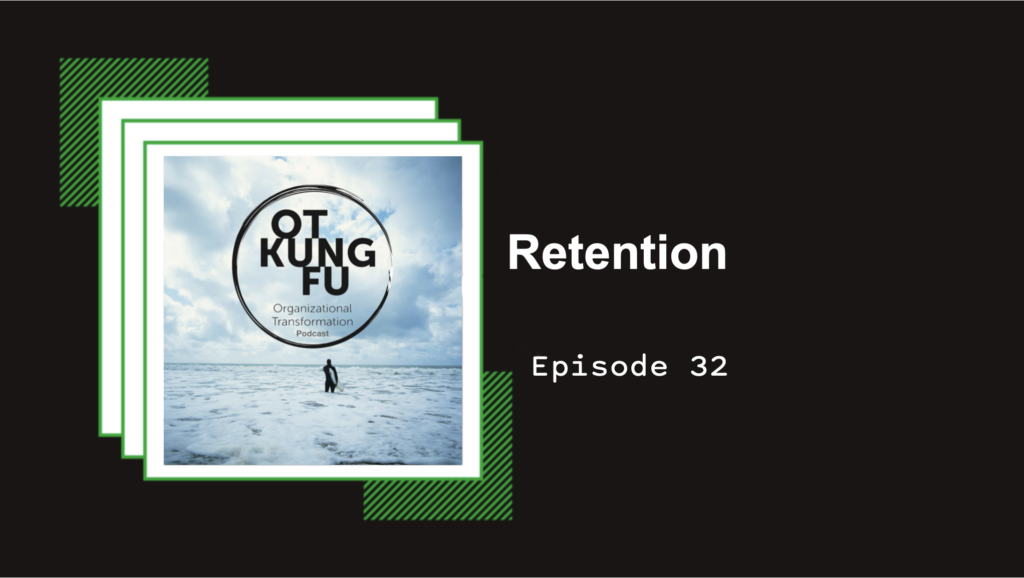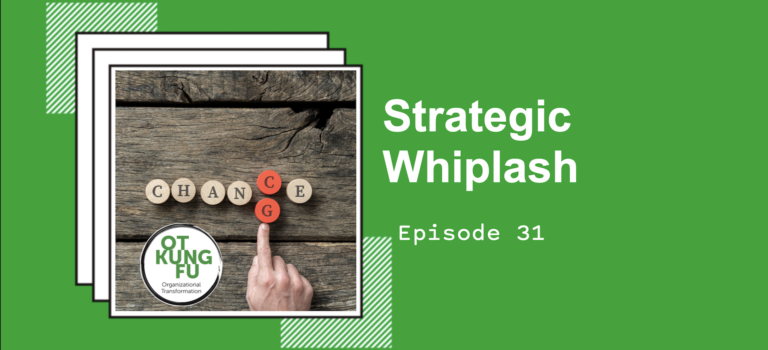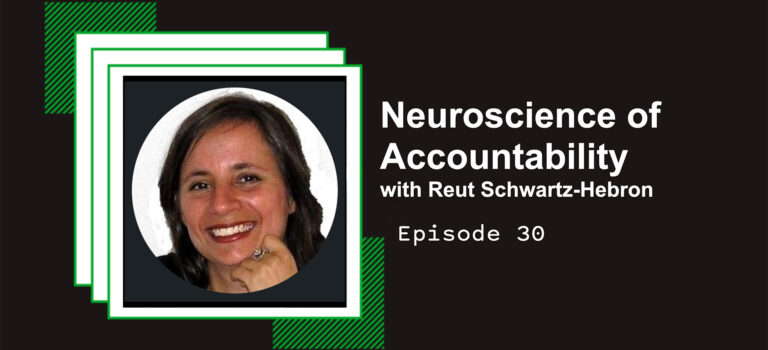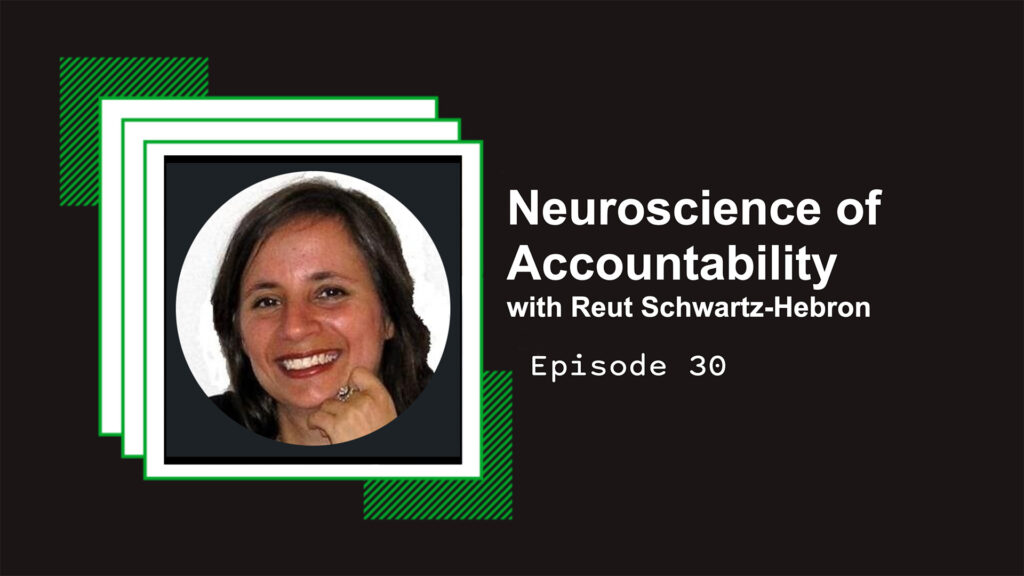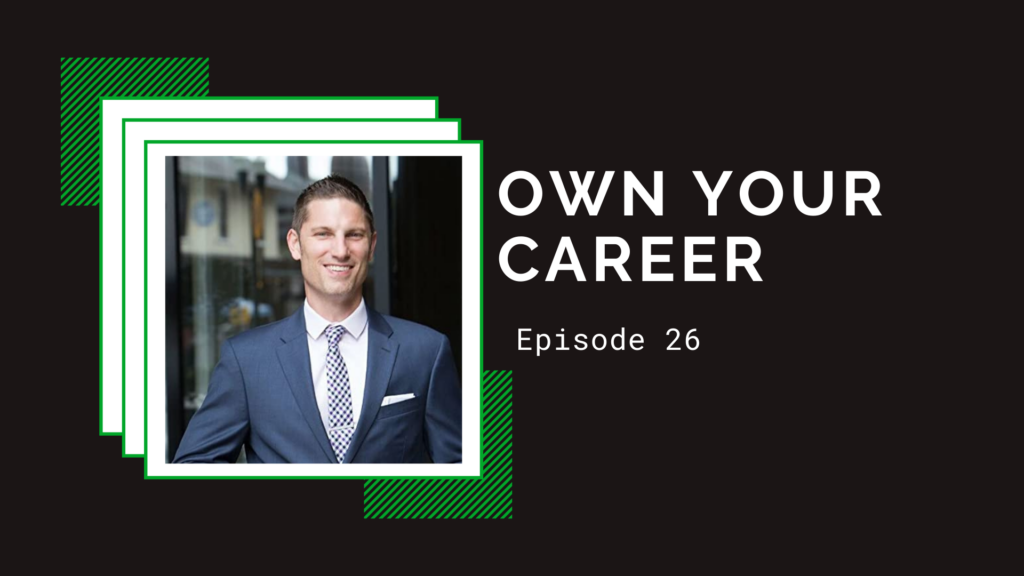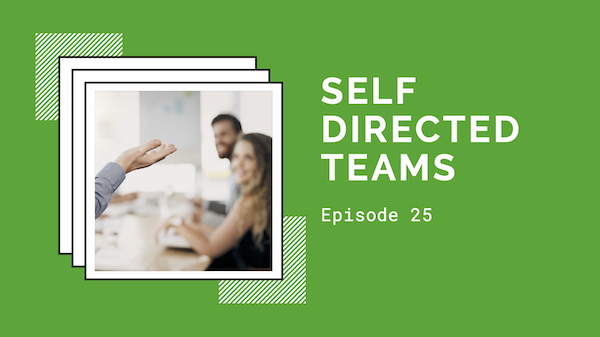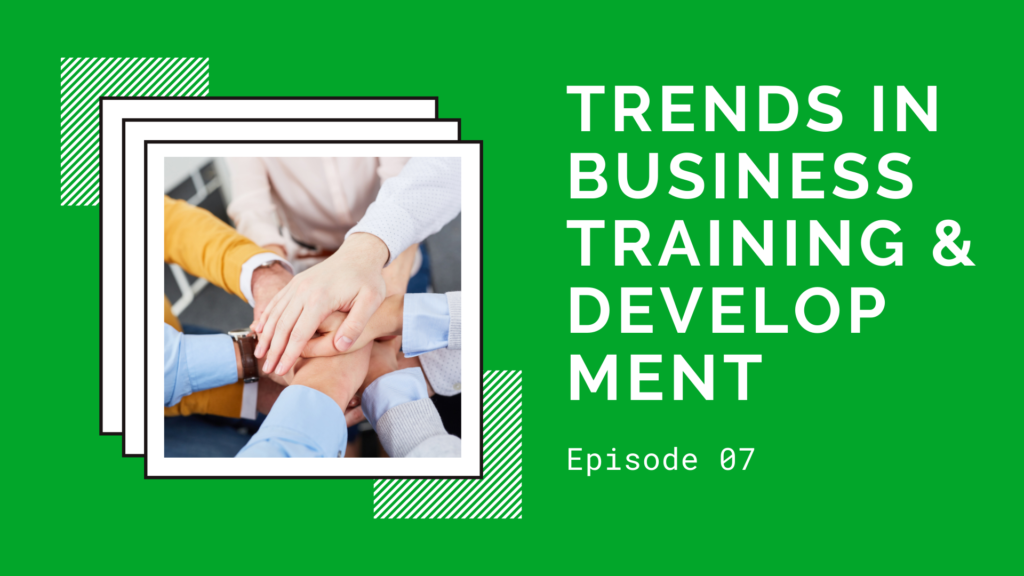Strategy and Decision-Making
What does going back to work look like? What is a hybrid workplace, at its core? What does all of this mean for leaders? What do we have to do differently?
These are the top questions we address in today’s episode of The OT Kung Fu Podcast.
This is the time to get rid of the policies that don’t work and the systems that are no longer serving the team. Question everything before reopening, or introducing big changes like a hybrid workplace.
There’s no going back to normal. You’re never going back to the same thing. It’s not going to be the same because no one is the same. We are all thinking differently about work. We are all feeling differently about what’s important. Just by virtue of changing as people, how we think about work, what work needs to be for us, and what’s going to create meaning for you, has shifted. Just because you’re returning to a building, doesn’t mean the job, or the environment, will be the same.
There’s a big balancing act between the short-term and the long-term when it comes to leading and decision making. What are the short-term decisions that have to be made? What are the long-term decisions that have to be made? Do they conflict? Will they be too much to handle at once? How do they relate to one another?
Reshaping Your Organization
The changes that have occured in the last few years have been a challenge, but they have also created an opportunity for companies to rethink how they want to structure their culture. It’s an opportunity that most leaders never get: the chance to restart, a totally clean slate. The things that we previously held as gospel truth have now been proven incomplete, and companies must respond in a fearless, open-minded way.
Communication and Leadership
These two come hand-in-hand when it comes to successful restructuring. Making changes, while necessary, can be incredibly difficult without support and unity, both within leadership and the team as a whole.
What is most important to your employees? What has their experience as a team member in the last couple years taught them?
How are you starting the dialogue and conducting the conversation? Are you just sitting in a room of leaders making decisions on your own? This might have been necessary as teams and companies had to simplify to survive, but for growth, you need as much information as possible.
Moving out of Crisis Management
Next, it’s time to move on from the strategies that worked when you were in crisis-mode.
For a while now, the norm has been a group of four or five people making the decision for the whole organization, without engaging with the rest of the team. While this is helpful to keep things moving in complicated times, this tendency isn’t good for the long-run.
Many leaders were so focused on pushing through, and were often so desperate to keep their organization alive, they’ve now continued to use the same strategies.
As companies are focusing on transitioning out of this phase, they are tapping into their workers, doing a lot of tiny pulsing and surveying, and are investing in their employees as people.
Before, leaders simply told them what to do, but now the principle of leading with empathy is considered a necessary and important piece of success.
Essential Skills
Empathy is a great example of the shifting values and essential skills in the workplace.
Across the board, flexibility has been identified as the number one skill for effective leading.
Especially in the United States, there’s this idea that, when it comes to empathy, wellbeing, health, and problems in general, “there’s a department for that”. It’s not necessary to make it a priority, and the leaders certainly don’t want to “waste their time” talking about things that aren’t directly business-related.
The conversation really starts there: how do you really allow people to be forthcoming?
Things that would have been the typical water cooler talk back in the office are even more underground because it’s an online chat now, or a text between coworkers, sharing their discomfort with returning to the office.
From a manager’s perspective, the training that is needed is on flexibility and empathy.
Addressing Burnout
In Jen and Sandi’s experience, 100% of people they’ve talked to have experienced burnout.
People feel exhausted, overworked, overwhelmed, even to the point of hopelessness. Burnout, naturally, leads to a series of questions:
Can I keep going like this?
Do I want to?
Burnout is a huge thing, and utilizing a hybrid workspace hasn’t been the solution to that problem.
In fact, all of the over-communicating, the distractions, all of the ways life begins to blur into your workspace, the disconnectedness, the isolation, and even the apathy that can grow over months all adds fuel to the fire, leading you closer to complete burnout.
You’re pushing outside your own comfort zone. You don’t feel like you’ve mastered anything, and you’re not sure what’s permanent and what’s temporary.
While there’s only so much that can be done to help, there are practical ways for leadership to invest in their team members to lend support and prevent burnout.
When it comes to maintaining those work/life boundaries, having a designated home office space is incredibly important. Unfortunately many people are still working from the kitchen table, in crappy chairs.
The goal is to avoid death by a thousand paper cuts.
It’s all the little small things that pile on top of each other that leads to burnout, when a small gesture of empathy can relieve the burden.
Going Forward with a Hybrid Workplace
Even in the hybrid workplace, new cultural norms are being built up. Right now, individuals, teams, and leaders are both actively and passively deciding what is now acceptable and what’s not.
Is helping your kids in the middle of the day an acceptable thing in your work environment? Maybe, maybe not. They probably won’t be using online school anymore, but they may still have toddlers at home because daycare isn’t an option anymore.
All of these pieces need to be considered when deciding what works for your organization. You can put together what you think is a good, meaningful, purposeful strategy for their organization and yet still lose some critical talent because they want to work on-site 100% of the time, or because they feel too insecure with the technology when it comes to working remotely.
Sandi and Jen believe there’s going to be a huge shift or upheaval of key talent, unless you can master your strategy. As a whole, this process is a test of test of your values.
You have to ask yourself, your leaders, and your employees what is really important. There’s been a change in what we see as doable, which impacts what is actually doable. People have taken stock of what is truly important to them, organized their priorities, and values, and they’re able to stand in them a little bit more than before.
The question is, will workplaces respect their newfound priorities, and empower them?
Short-Term vs. Long-Term
In general, the best thing you can do is encourage the heart. The whole practice of supporting people, developing their skills, and creating meaning with them in the organization requires critical conversations.
You need to balance the ability to make the best short-term decisions while maintaining the best long-term vision you can.
There are very few people, very few leaders, who are actually skilled in this way innately. Training these principles should be commonplace, rather than a last resort.
When shit hits the fan two years from now, or whenever the inevitable issue arises, will your leaders and employees have the skills and tools they need? Will they be able to hit the ground running?
Regardless of what stage your business is at, building and maintaining your team is the key to short-term and long-term success. There needs to be a creative, open, flexible environment where no one is getting judged for their differences in perspective, opinions, needs, or skills.
You have to create an environment that will utilize opportunities to reshape the hybrid workplace culture into something empowering, something your team can believe in and dedicate themselves to.
For more resources like this, head over to OT KungFu’s website for podcasts, blogs, and more. To find more about Sandi and Jen, you can find them on their respective sites: Satori Consulting, and Management Possible.
Jen is the owner of Management Possible® focused on training and coaching multi-level management and leadership individuals and teams nationally and globally. Sandi is the owner of Satori® Consulting inc. a global consulting firm focused on helping organizations solve complex problems in strategy, leadership and governance.

